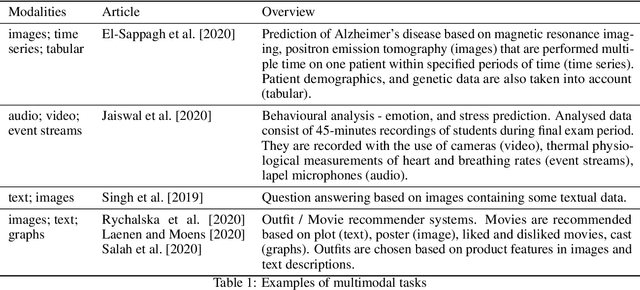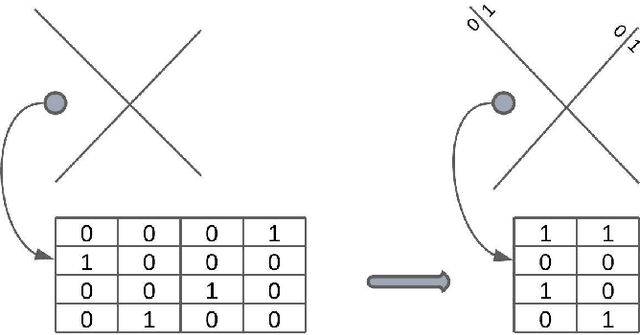Does a Technique for Building Multimodal Representation Matter? -- Comparative Analysis
Paper and Code
Jun 09, 2022



Creating a meaningful representation by fusing single modalities (e.g., text, images, or audio) is the core concept of multimodal learning. Although several techniques for building multimodal representations have been proven successful, they have not been compared yet. Therefore it has been ambiguous which technique can be expected to yield the best results in a given scenario and what factors should be considered while choosing such a technique. This paper explores the most common techniques for building multimodal data representations -- the late fusion, the early fusion, and the sketch, and compares them in classification tasks. Experiments are conducted on three datasets: Amazon Reviews, MovieLens25M, and MovieLens1M datasets. In general, our results confirm that multimodal representations are able to boost the performance of unimodal models from 0.919 to 0.969 of accuracy on Amazon Reviews and 0.907 to 0.918 of AUC on MovieLens25M. However, experiments on both MovieLens datasets indicate the importance of the meaningful input data to the given task. In this article, we show that the choice of the technique for building multimodal representation is crucial to obtain the highest possible model's performance, that comes with the proper modalities combination. Such choice relies on: the influence that each modality has on the analyzed machine learning (ML) problem; the type of the ML task; the memory constraints while training and predicting phase.
 Add to Chrome
Add to Chrome Add to Firefox
Add to Firefox Add to Edge
Add to Edge